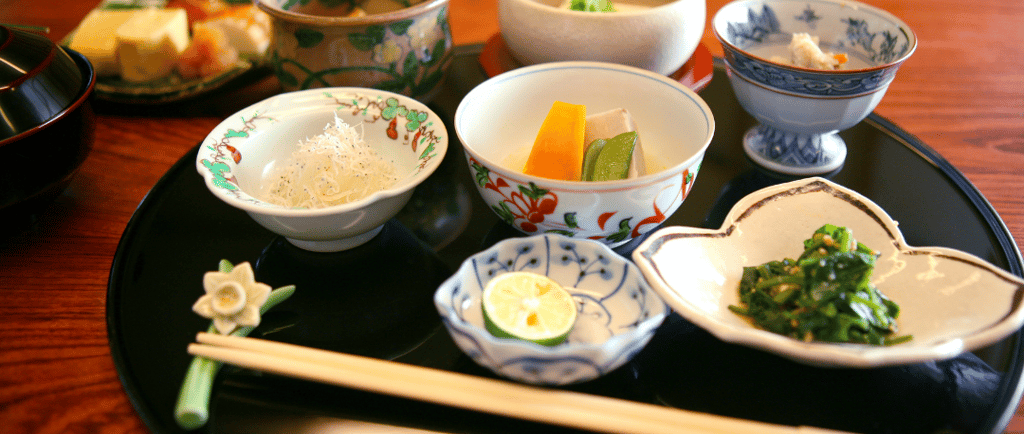Why Japan Stays Slim: Unveiling the Secrets Behind Low Obesity Rates
Discover the unique dietary habits and lifestyle factors that contribute to maintaining a healthy weight in Japan.
SELF-CARE
5/6/20253 min read


Why Does Japan Have Such a Low Obesity Rate?
Japan has a remarkably low obesity rate, standing at a mere 4.94% in 2022. This is a stark contrast to the figures in the US and UK, which hover around 41.9% and 29% respectively. What’s the secret behind Japan’s ability to maintain such a healthy population? Let’s explore the unique dietary habits and lifestyle factors that contribute to this phenomenon.
1. Portion Control
In Japan, dining is considered an artful experience, characterized by small portions of various dishes served on aesthetically pleasing plates. This approach not only enhances the dining experience but also fosters a sense of satiety despite consuming smaller quantities. While it may require extra effort in preparation and dishwashing, this practice encourages cooking at home and prevents a sedentary lifestyle, which in turn contributes to calorie expenditure.
A fundamental aspect of Japanese tradition is the principle of "Hara Hachi Bu", which encourages eating until 80% full. This practice reinforces the wisdom that less is often more when it comes to health. Meals are typically accompanied by staples like miso soup and green tea, which help promote satisfaction without overeating.
2. Moderation of Calorie-Rich Foods
Japanese cuisine includes some indulgent dishes, such as tempura and karaage (fried chicken). Slim individuals in Japan tend to eat these dishes less frequently, often reserving them for special occasions and sharing them with family and friends, which enhances enjoyment while limiting overconsumption. Popular staples like ramen and udon noodles are known for their high carb and sodium content, but they are consumed in moderation, often balanced with other nutrient-rich foods.
Cooking at home allows for greater control over ingredients, making it easier to manage sugar and salt intake. This practice ensures that Japanese flavours are preserved while prioritizing health.
3. A Balanced, Nutrient-Rich Diet
One notable difference between Japanese and Western diets is the way meat is consumed. In Japan, meat is often eaten in smaller quantities and combined with other ingredients. For example:
Gyoza (dumplings) contain a mix of meat and vegetables.
Traditional Japanese stews feature small portions of chicken, pork, or beef alongside vegetables.
Sautéed meat is typically shredded thinly, making it easier to combine with vegetables.
To compensate for smaller portions of meat, the Japanese diet incorporates protein-rich alternatives like tofu, beans, eggs, fish, and vegetables. Soy-based products such as tofu and natto provide a low-calorie protein source, supporting a balanced approach to nutrition. Green tea, a common beverage in Japan, replaces sugary drinks, further reducing calorie intake.
4. Foods That Promote Healthy Weight
Japanese cuisine includes many foods that are naturally low in calories and beneficial for weight management:
Tofu: A versatile, low-calorie protein source used in dishes like miso soup, stews, and stir-fries.
Fermented Foods: Items like miso, natto, and pickles improve gut health, which can aid in weight regulation.
Seaweed: Low in calories and high in fibre, seaweed helps you feel fuller for longer.
Green Tea: Rich in catechins, green tea boosts fat burning and is packed with antioxidants. It also helps moderate blood sugar spikes, which can curb appetite.
5. An Active Lifestyle
While Japan’s overall energy expenditure may not exceed that of other nations, a culture of movement prevails. Physical activity is seamlessly integrated into daily routines:
Daily Activities: Traditional practices like sitting on tatami floors and sleeping on futons require frequent squatting, which engages the body. Although more people are adopting Western furniture, many still incorporate these habits into their daily lives.
Transportation: Walking or biking is a common mode of transportation, and cities are designed to encourage these activities along with the use of public transportation.
Errands and Housework: Grocery shopping is often done in person rather than relying on delivery, and household chores are actively performed, keeping people physically engaged.
Hobbies: Many Japanese engage in activities like flower arrangements, tea ceremonies, painting, martial arts, or other sports, which keep them active and mentally engaged.
Japan’s unique combination of mindful eating, balanced nutrition, and an active lifestyle creates an environment where maintaining a healthy weight is the norm rather than the exception. These cultural practices offer valuable lessons for anyone seeking to adopt healthier habits and achieve a balanced lifestyle.
Sakura Fitness & Beauty
Promoting fitness, health, wellness, and beauty.
© 2025. All rights reserved.
London, UK
info@sakurafitnessbeauty.com
